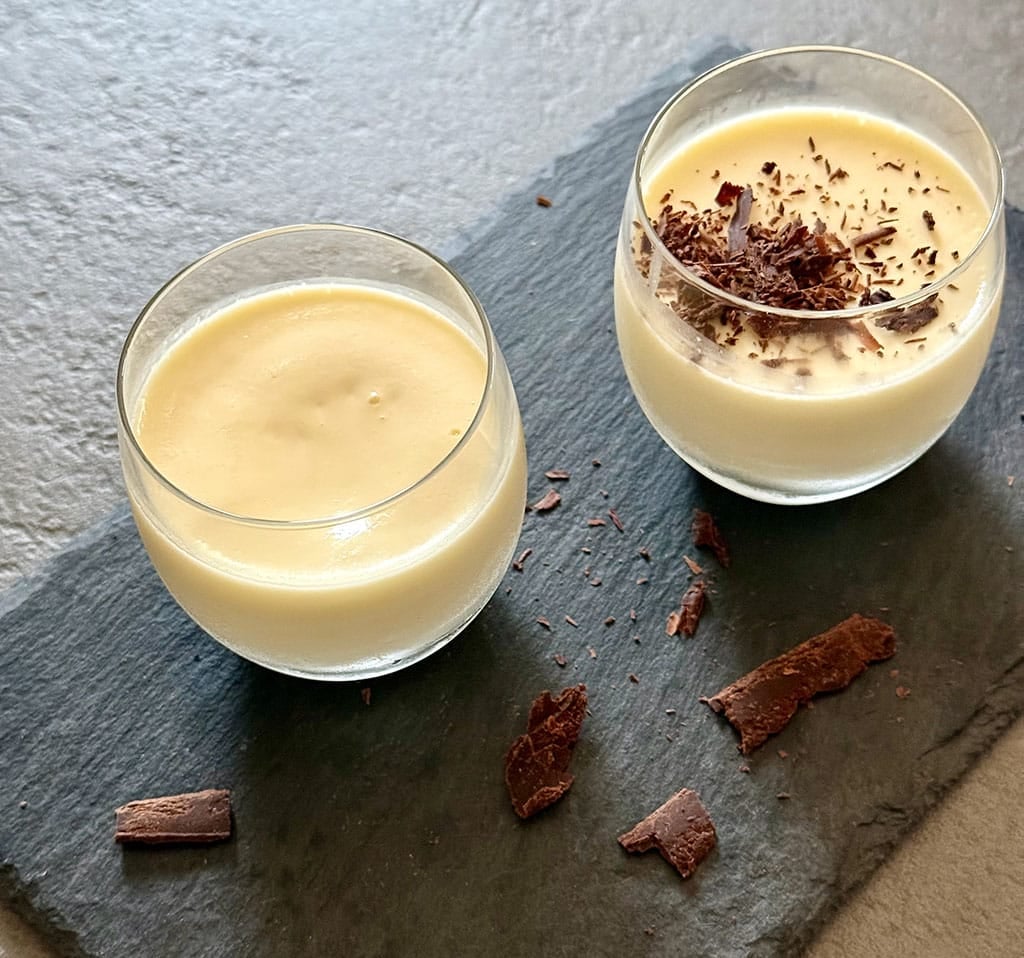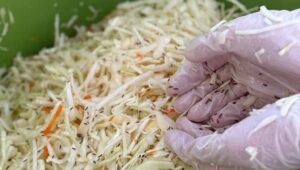Lemons are undoubtedly one of my favourite dessert flavours. Offering a perfect balance of sweetness and acidity, lemon desserts always provide a light and refreshing end to a meal. Having tried cookies, tarts, pies, and curds, I have recently discovered a new way to indulge in a bit of lemon at the end of the meal – a lemon posset.
A modern lemon posset is merely a combination of cream and sugar that is set with the fruit juice, however, its original version called for a bit more than just these three basics. The 16th century posset would be a dessert or a drink made from cream or milk curds, enriched with sugar, spices and alcohol. It was served warm and was meant to cure colds or fevers. There are references dating back to 1620 in the Journal of the House of Lords that King Charles I was prescribed a posset by his physician.
One of the timeless recognitions of the medicinal properties of this drink is the mentioning by Master Shakespeare. In this regard, he writes the following in Hamlet, Act 1:
And with sudden vigour it doth posset,
And curd, like aigre [sour] droppings into milk,
The thin and wholesome blood.
At the same time, possets have also been drunk for fun. For example, sack (a sweet ale of sorts, similar to cherry) enriched versions were habitually drunk at weddings when it came to toasting the arrival of the bride and groom. Master Shakespeare has equally acknowledged that too in The Merry Wives of Windsor, Act 5, Scene 5:
Yet be cheerful knight: thou shalt eat a posset to-night at my house;
Where I will desire thee to laugh at my wife.
More infamously, in Macbeth, Lady Macbeth poisons the possets of the guards in preparation for King Duncan’s murder. Thus, it looks like it can be used as a deadly weapon too, but let’s not go there.
Whilst aristocracy would enjoy their possets made of cream and/or curd, the common folk would thicken theirs with bread, biscuits, oatmeal, egg yolks or almonds, or a variation of the above.
Regardless of the stature, the creamy texture was the goal that everybody was after. Though milk curds might suggest a possibility of a flaky or grainy texture, the recipes of the time would recommend to take care when combining cream with acidity: “Grate two Naples biscuits into a pint of thin cream, put in a stick of cinnamon and set it over a slow fire. Boil it till it is of a proper thickness, then add half a pint of sack, a slice of the end of a lemon, with sugar to your taste. Stir it gently over the fire, but don’t let it boil lest it curdle. Serve it up with dry toast.” (Elizabeth Raffald, The Experienced English Housekeeper, 1769).
These recommendations still hold true. When preparing a modern recipe and setting the posset with fruit juice, an eagle eye precision must be paid to the cream-to-juice ratio. The complexity arises from the fact that fruits with the highest levels of pectin capable of setting the cream are usually the fruits with highest levels of acidity, like lemons, limes, cranberries, raspberries, etc. Introducing acidity into a pot of cream is a tricky affair, as one drop too many can lead to a split and grainy disappointment.
Most of the recipes are still frustratingly impractical in their instructions on the matter as they use quantity of fruits instead of grams or millilitres as a measure. For example, a recipe would call for juice and zest of three lemons not specifying types or sizes of lemons. If you would have seen the gigantic Amalfi lemons yourself, you would know what I am talking about.
For these reasons, I have set out to work on my own ratio through trial and error. Just a few curdled (but delicious) possets separated me from success. In the end, I arrived at the following ratio:
500 gr. cream (33%)
100 gr. sugar
80 gr. lemon juice
1 teaspoon of lemon zest
To prepare the posset, slowly warm up the cream, sugar and zest so that sugar dissolves. Take off the fire, and cool for 7-10min. Once cool, whisk in the lemon juice on a slow drip. Pour into cups and allow to chill completely; overnight is the best. Decorate with whatever you have in hand – mint leaves, berries, zest, nut or chocolate crumbs or shavings. Enjoy chilled!
By Dr. Irina Mikhailava
|| features@algarveresident.com
Dr. Irina Mikhailava, a chef and a good food champion, happily residing in the Algarve and eating all over the world with an appetite for learning, sharing and writing. Instagram: incompanyoffood


























